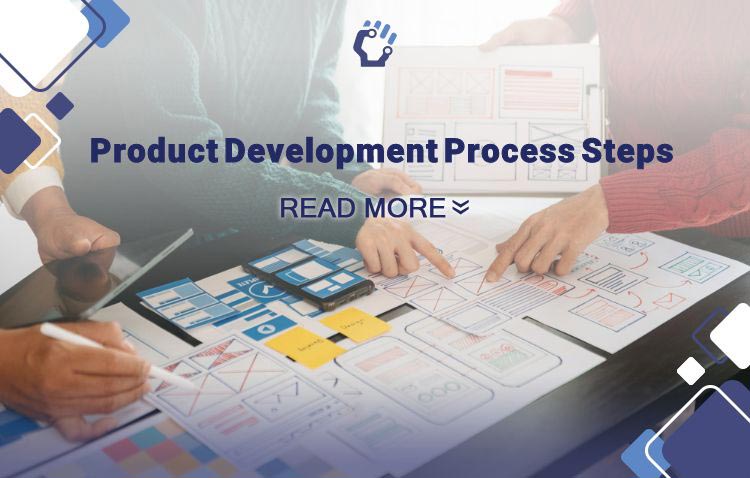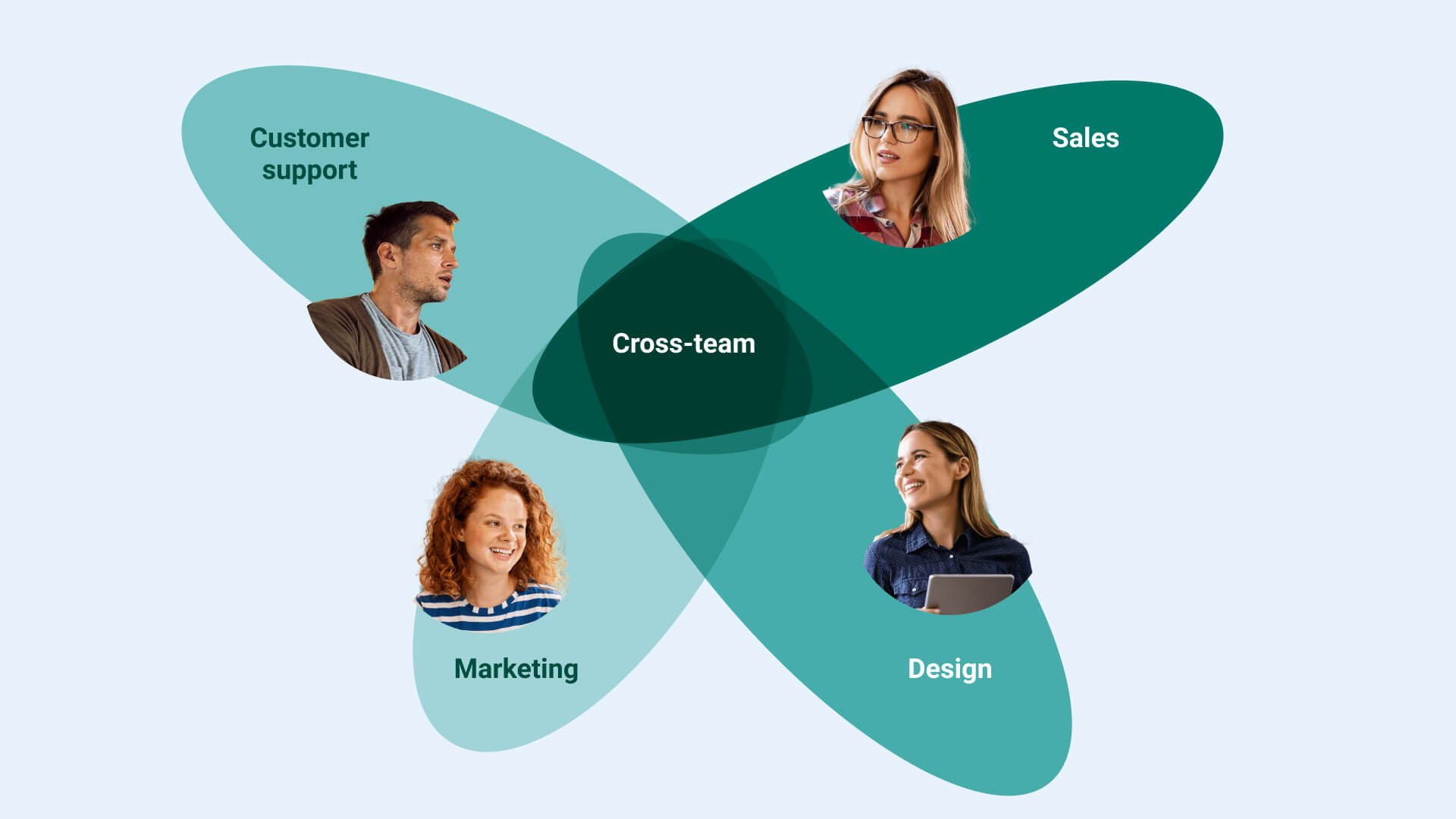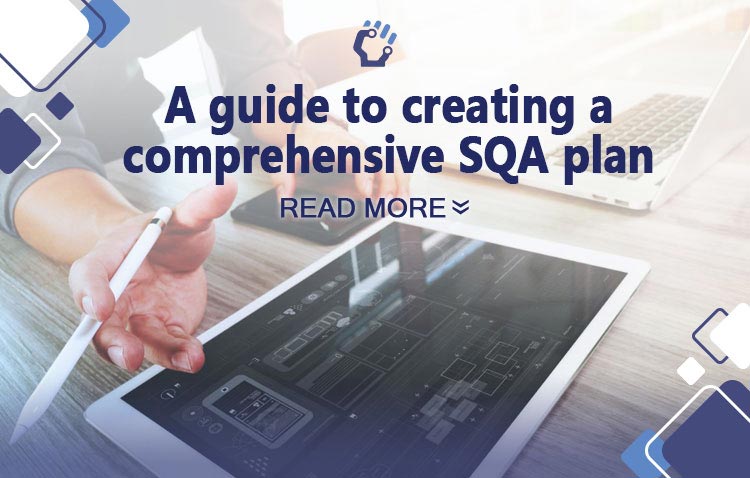Understanding the Core Phases of the Product Development Process
The product development process is a multi-faceted journey that unfolds through several core phases, each crucial for delivering successful outcomes. Beginning with ideation, where innovative concepts are conceived, companies delve into comprehensive market research, identifying potential opportunities and challenges.
On the other hand Product development process is the multi-faceted process of thinking through and researching an idea, designing it, building it, and taking it to market. The product development process has four key phases: opportunity validation, design, development, and launch and iteration.
Transitioning to the design phase, meticulous planning and prototyping bring ideas to life, setting the foundation for the development stage. Here, rigorous testing and refinement ensure the product aligns with customer expectations. Finally, the launch propels the product into the market, with post-launch analysis guiding further enhancements. A noteworthy example is Apple's product development process, epitomized by the iPhone. From conceptualization to market dominance, understanding and mastering these core phases are pivotal for any company's product development success.
The core phases of the product development process have 4 steps:
1. Opportunity validation: In the opportunity validation phase, you identify and assess potential product ideas. You will need to consider factors such as market demand, technical feasibility, and competitive landscape. You should also conduct user research to understand the needs and pain points of your target customers.
2. Design: Once you have identified a viable product opportunity, you will need to design your product. This includes defining the product's features, functionality, and user experience. You will also need to develop a prototype or mockup to test your design with users.
3. Development: In the product development process phase, you will build your product. This includes writing the code, designing the database, and creating the interface. You will also need to test your product thoroughly to ensure that it is bug-free and meets the needs of your users.
4. Launch and iteration: Once your product is developed, you will need to launch it to the market. This includes creating a marketing plan, setting a price, and making your product available to customers. You will also need to monitor your product's performance and collect feedback from users. This feedback can be used to improve your product and develop new features in future iterations.
Embark on a journey of innovation with our expert Product Development Services!
Initiation and Idea Generation: The Starting Point of the Product Development Process
The initial stage of the product development process begins by generating new product ideas. This is the product innovation stage, where you brainstorm product concepts based on customer needs, concept testing, and market research.
At the inception of the product development process lies initiation and idea generation, the foundational stages that pave the way for innovative creations. This phase is marked by the identification of opportunities and challenges within the market, sparking the generation of groundbreaking concepts. Successful companies invest considerable effort in understanding customer needs, market trends, and technological advancements to fuel their idea-generation process.
For instance, Tesla's initiation involved recognizing the shift towards sustainable energy and electric vehicles, leading to the groundbreaking Tesla Roadster. By embracing a strategic approach in this initial phase, companies can set the tone for a robust product development journey, ensuring their innovations resonate with the evolving demands of their target audience.
There are many different ways to generate new product ideas that we suggested to you:
-
Customer feedback
One of the best ways to get new product ideas is to listen to your customers. What are their needs and wants? What problems are they trying to solve? What products are they using now, and what do they like and dislike about them?
-
Market research
Market research can help you to identify new trends and opportunities in the market. It can also help you to understand the competitive landscape and to identify unmet customer needs.
-
Brainstorming
Brainstorming is a technique for generating new ideas by encouraging participants to come up with as many ideas as possible, without judgment.
-
Technology scouting
Technology scouting is the process of identifying and evaluating new technologies that could be used to develop new products.
-
Internal idea systems
Many companies have internal idea systems where employees can submit new product ideas.

Concept Development: Refining Ideas into Viable Concepts
Concept development marks a pivotal phase in the product development process, where raw ideas undergo refinement to transform into viable concepts. This stage involves translating creative visions into tangible plans that align with market needs. An example of this process is Apple, renowned for its innovative product development. When conceiving the iPhone, Apple not only envisioned a sleek mobile device but also integrated functionalities that revolutionized the smartphone industry. The concept development phase for the iPhone included meticulous planning of features, design elements, and user experience, ensuring the product's alignment with Apple's brand and the evolving expectations of consumers.
During concept development, companies conduct thorough market research, competitor analysis, and feasibility studies to validate and enhance their ideas. This iterative process involves cross-functional collaboration, ensuring that the refined concepts are technically feasible, financially viable, and cater to the target audience's demands. Companies often leverage prototypes and mock-ups to visualize the concepts and gather feedback for further refinement.
By emphasizing concept development, companies mitigate risks associated with bringing a product to market. This strategic approach enables them to identify potential challenges early in the process, fostering the creation of products that not only meet customer expectations but also possess a competitive edge in the market. Through meticulous concept development, companies can lay the groundwork for successful and innovative product launches.
Design Phase: Transforming Concepts into Detailed Plans
The design phase is a crucial step in the product development process, where refined concepts are transformed into detailed plans, laying the foundation for the actual product creation. This phase involves translating conceptual ideas into tangible specifications, encompassing elements like product architecture, user interface, and technical specifications.
An exemplary illustration of an effective design phase comes from Tesla, the electric vehicle pioneer. When developing the Tesla Model S, the design phase was a meticulous process that went beyond aesthetics. Tesla focused on engineering a vehicle with cutting-edge electric propulsion technology, extended range, and innovative features. The design phase involved not only the exterior appearance but also the intricate details of battery placement, energy efficiency, and the intuitive touchscreen interface inside the vehicle.
During the design phase, companies employ various tools such as CAD (Computer-Aided Design) software to create detailed schematics and 3D models in the product development process. This allows for a comprehensive understanding of how each component fits together and ensures alignment with the initial concepts. The design phase is also marked by collaboration between design and engineering teams to address technical constraints and optimize the product for efficient production.
By investing time and resources in a robust design phase, companies can mitigate potential flaws, streamline production processes, and enhance the overall quality of the final product development process. This detailed planning ensures that the envisioned product not only meets design aesthetics but also performs optimally, meeting or exceeding customer expectations. The design phase serves as a bridge between conceptualization and tangible realization, setting the stage for the subsequent development stages.
Read more: Product Development Best Practices
Testing and Prototyping: Ensuring Feasibility and Functionality
Testing and prototyping are pivotal aspects of the product development process, serving to validate the feasibility and functionality of a product before it moves into full-scale production. This phase involves creating prototypes, which are early versions of the product, and subjecting them to rigorous testing to identify and rectify any issues.
Apple exemplifies a rigorous approach to testing and prototyping in its product development. Before launching a new iPhone, Apple extensively tests prototypes to ensure the device's durability, performance, and user experience. Testing involves simulations of real-world scenarios, stress tests, and user trials to uncover any potential flaws. This meticulous process allows Apple to refine and enhance the product before mass production, contributing to the company's reputation for delivering high-quality and reliable devices.
The testing and prototyping phase is multifaceted, encompassing various types of tests such as functionality testing, usability testing, and performance testing. These tests help in assessing how well the product aligns with its intended purpose, how users interact with it, and how it performs under different conditions.
Moreover, this phase is iterative, with each round of testing leading to improvements and refinements. It ensures that any issues identified are addressed, resulting in a more robust and reliable final product. By investing in comprehensive testing and prototyping, companies not only reduce the risk of post-launch issues but also enhance customer satisfaction by delivering products that meet or exceed expectations.
In conclusion, testing and prototyping are indispensable steps in the product development process, fostering innovation and ensuring that the final product meets the highest standards of quality and functionality.

Production: Bringing the Product to Life
The production phase represents the culmination of the product development process, where the carefully crafted plans and prototypes transition into tangible products for the market. This critical stage involves scaling up production to meet demand and ensuring that the product maintains the envisioned quality and specifications.
Tesla, the renowned electric vehicle manufacturer, exemplifies excellence in the production phase. When introducing a new model, such as the Tesla Model 3, the company orchestrates a sophisticated production process. Tesla's Gigafactories employ advanced automation and innovative techniques to streamline the assembly line, resulting in efficient and precise production.
During this phase, companies must manage supply chains, optimize production workflows, and adhere to stringent quality control measures. The goal is to achieve consistency in product quality and meet market demand effectively. Companies often leverage cutting-edge technologies and data-driven approaches to enhance efficiency and minimize production costs.
Moreover, sustainability considerations play an increasingly significant role in modern processes. Companies are adopting eco-friendly practices and materials to align with environmental goals and consumer preferences.
In essence, the production phase is the bridge between product design and delivery to customers. Successful execution requires a seamless integration of technology, logistics, and quality control to ensure that the envisioned product becomes a reality and reaches consumers in a timely and efficient manner.
Product Launch: Introducing Your Innovation to the Market
The product launch phase is the culmination of a comprehensive product development process, marking the introduction of an innovation to the market. This crucial stage involves orchestrating a strategic and impactful unveiling to capture the attention of the target audience and generate enthusiasm.
Apple, a global technology giant, exemplifies masterful product launches with iconic events like the introduction of the iPhone. These events are meticulously choreographed to showcase not only the product's features but also the brand's commitment to innovation and user experience. The anticipation built around Apple's product launches generates significant media coverage and consumer engagement, contributing to the company's success.
A successful product launch requires a blend of effective marketing, strategic timing, and a deep understanding of consumer needs. Companies leverage various channels, including social media, traditional media, and live events, to create a buzz around the new product. Engaging storytelling and clear communication of the product's value proposition are essential to resonate with the target audience.
Post-Launch Evaluation: Continuous Improvement in the Product Development Process
Post-launch evaluation is a critical component of the product development process, emphasizing continuous improvement and refinement. Companies like Google exemplify the significance of post-launch assessment through their iterative approach to products. After launching a product, Google routinely collects user feedback, monitors performance metrics, and identifies areas for enhancement.
For instance, Google's introduction of the Gmail platform involved ongoing updates and improvements based on user feedback. Post-launch evaluation allowed them to address user concerns, enhance features, and optimize the overall user experience. This commitment to refinement reflects a dedication to delivering products that evolve in response to user needs and market dynamics.
Post-launch evaluations involve analyzing user satisfaction, identifying potential issues, and assessing how well the product meets its objectives. By leveraging data-driven insights, companies can iterate on their products, ensuring they remain competitive and aligned with evolving market demands. This iterative cycle of launch, evaluation, and enhancement is integral to sustained success in the dynamic landscape of the product development process.

Iterative Development: Adapting and Enhancing Products Over Time
Iterative development is a cornerstone of the product development process, involving continuous adaptation and enhancement of products over time. Apple Inc. stands as a prime example of successful iterative development with its iPhone series. Apple consistently releases new iPhone models, each iteration featuring enhancements in design, functionality, and technology.
Through iterative development, Apple responds to market trends, user feedback, and technological advancements. Every new iPhone launch represents a refined and improved version, building upon the strengths of its predecessor. This iterative approach allows Apple to stay at the forefront of innovation and maintain a loyal customer base.
The iterative development cycle involves regular updates, addressing user needs, fixing issues, and incorporating new features. It ensures that products remain competitive, responsive to changing demands, and aligned with the evolving landscape of technology and consumer preferences.
Key Stakeholders and Their Roles in the Product Development Process
In the intricate web of the product development process, key stakeholders play pivotal roles, each contributing to the success of the venture. Take Tesla, for instance, a trailblazer in the automotive industry. In Tesla's product development, stakeholders such as engineers, designers, and supply chain managers collaborate closely. Engineers focus on technological innovations like electric propulsion, while designers ensure sleek aesthetics. Supply chain managers ensure the timely availability of components.
Additionally, Tesla's customer base becomes a crucial stakeholder, providing feedback that directly influences iterative development. Investors also play a vital role, providing financial support for research and development initiatives. The dynamic interaction among these stakeholders showcases the intricate dance involved in bringing a product to market successfully. Each stakeholder's expertise and input contribute to Tesla's continuous refinement and innovation in the electric vehicle sector.








